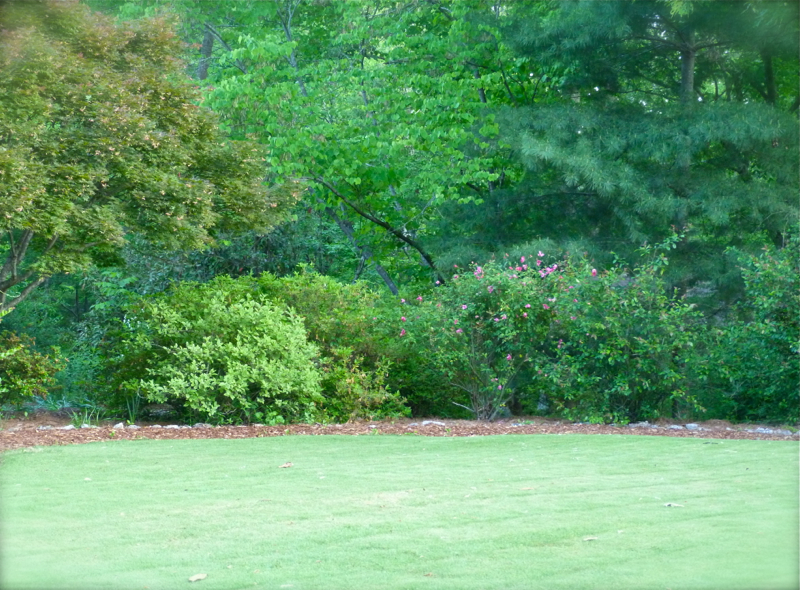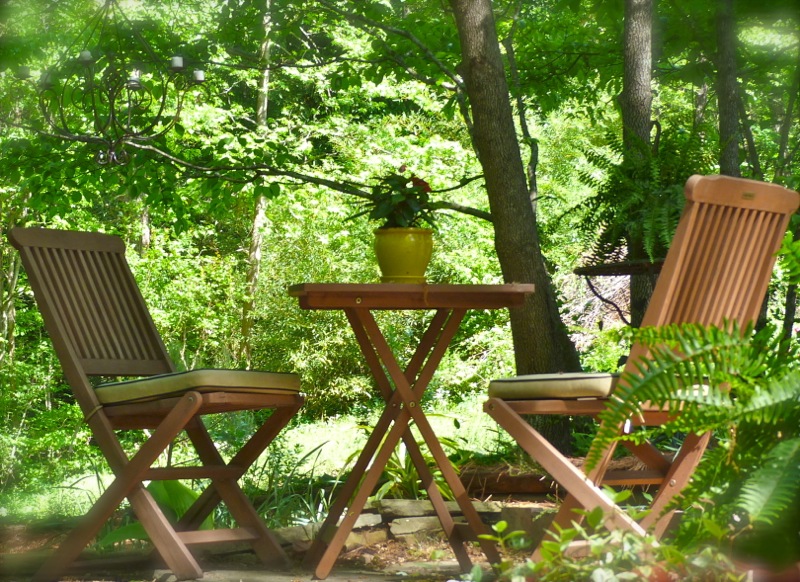Five Rules To Prune By
 Sunday, April 15, 2012 at 9:50PM
Sunday, April 15, 2012 at 9:50PM What! When did this happen?
I was looking up, up at my DWARF burning bushes, Euonymus alatus, that were towering above me, at least fifteen feet tall. The lower part of the branches were bare, while green growth was concentrated at the top.
When did I last prune these things?
I did remember pruning them, once upon a time, but how many years ago I could not say. I sighed. I should have done it back in January or February, but I certainly couldn't wait another year. Emergency surgery was needed, and it would not be easy or pretty.
Rule one: Low maintenance means regular maintenance. A postponed job always involves more work.
I enjoy pruning. It is my favorite of all gardening chores. I shake my head at overgrown or poorly pruned shrubs in other yards, thinking what a difference a good trim would make. Plants enjoy a proper cut! It stimulates new growth and can make a huge difference in a plant's appearance. People neglect pruning for several reasons, but the most common one is lack of knowledge. They are afraid to prune. Others prune, but they prune their shrubs with a one technique fits all, usually a flat top approach with the hedge shears. This results in shrubs with excessive growth on top and little growth below. Ugly!
Rule two: Almost all shrubs benefit from layered pruning, with cuts made at the top, middle, and lower parts of the shrub. The widest part of the shrub should be at the bottom, tapering inward toward the top. If the widest part of the shrub is the top, sunlight will have a hard time reaching the lower branches, and naked stems are the result. Even hedges should be cut slightly wider at the bottom, never trimmed straight across the top.
This is a photo of a couple of the burning bushes after I pruned them. They look traumatized for now, but soon new growth will cover the cuts. I promise not to wait so long next time.
Rule three: Prune at the appropriate time of the year. When is that? It is always good to research individual plants if you don't know anything about them. If you prune a plant at the wrong time, you are unlikely to kill it, but you may lose the next season's blooms or fruit. I doubt if I will have berries this year on my burning bushes, but I am fine with that. Generally, deciduous shrubs that bloom in the spring should be pruned soon after flowering, while summer bloomers should be trimmed late winter/early spring. I like to prune deciduous trees in winter while they are dormant and I can see their branch structure. Dead limbs can be pruned away any time of the year. Evergreens should be pruned as new growth begins in the spring, and light pruning may be done later in the summer if needed. Avoid pruning shrubs and trees in the fall when new growth could suffer frost damage.
I worked hard yesterday to prune my burning bushes. It took several hours, and the hardest part was hauling all those heavy, long limbs to the brush pile.
Rule four: It is good to have a helper to haul away the trimmings! Lou was gone most of the day, but I was glad to see him when he finally appeared! I was also dreaming of a chipper/shredder as I worked. That is a purchase we are considering.
Rule five: When you are finished, take regular walks to enjoy your garden. Appreciate the results of your labor!
Here are some views taken recently in and around the front garden. Literally, every plant you see has benefited from pruning, some every once in a while, others annually or biannually. The Confederate jasmine on the arch separating the patio from the front garden is in full bloom now. It has a wonderful fragrance! I will prune it after it finishes blooming.
The Confederate jasmine on the arch separating the patio from the front garden is in full bloom now. It has a wonderful fragrance! I will prune it after it finishes blooming.
 This view is across the front garden, taken beside the patio.
This view is across the front garden, taken beside the patio.
 another view across the front garden
another view across the front garden
 A view of lawn and garden. The zoysia lawn, by the way, is fertilized in spring and fall with an all natural fertilizer. No artificial chemicals! All the little creatures love it, and it feels great to bare feet.
A view of lawn and garden. The zoysia lawn, by the way, is fertilized in spring and fall with an all natural fertilizer. No artificial chemicals! All the little creatures love it, and it feels great to bare feet.
 This view is taken from the parking court in front of the house.I wish you all a great week, and may you always have time to walk in a garden! Deborah
This view is taken from the parking court in front of the house.I wish you all a great week, and may you always have time to walk in a garden! Deborah
 Permalink
Permalink 

